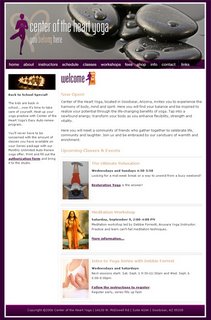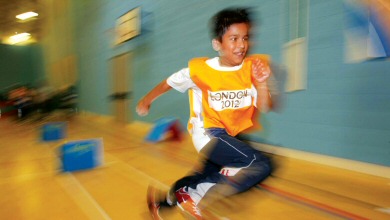 Yogi Ananda, a 72 years old Yoga master started yoga for yogurt.
Yogi Ananda, a 72 years old Yoga master started yoga for yogurt.
He is currently teaching the Indian spiritual yoga practice across central New York and in his home studio at White Birch Lane in Auburn. He started his Yoga Journey since his 11th age.
According to him, Yoga is his life, recreation and his socialization. His introduction to yoga came at a monastery in Bangladesh(The eastern area of India). A natural curist doctor offered Ananda a steady supply of sweet yogurt in exchange for every yoga lesson he took. The offer proved too tempting for him to resist.
But he surpassed his taste for yogurt by the his yoga passion. He wandered across India as a monk to learn more about yoga and acquire more experience. Following years of intense study that included eight years of seclusion in a Himalayan cave, Ananda began teaching at the International Yoga Teacher's Training Center in Calcutta. Aspiring yoga teachers came from around the world to be certified by Ananda. Yoga instruction also took Ananda across the globe, from Thailand and Indonesia to East Africa and Spain.
Ananda said that main aim of his life has been to spread awareness about the relation between soul and body by the practice of yoga.
In 1973, Ananda came to America at the behest of the California Board of Education. Board sponsored him to teach yoga at colleges in San Diego, Laguna Beach and San Francisco. Ananda then started yoga classes around the country. After he arrived at Syracuse University in 1974. Students and university staff encouraged him to stay there.
By the end of the decade, Ananda had established the Shankar Yoga Society in Syracuse and instructed celebrities like George Harrison, Peter Sellers and Linda Lavin at the New Age Health Spa in the Catskills.
“They mostly came to lose weight, that's not what yoga is about,” Ananda said with a lightly humorous tone.
Nowadays Ananda concentrates on teaching Yoga at Cayuga County Counseling services and companies like Bristol-Myers Squibb and The Syracuse Post-Standard. He has also conducted a course at Onondaga Community College for more than 25 years. Despite his decades of devotion to yoga, Ananda still shies away from designating himself a teacher.
“The more you learn [from yoga], the more you can then teach[Yoga],” Ananda said.
In his yoga classes, Ananda often uses the operation of a car as an organizing principle for the means of healthy human living he emphasizes. A balanced diet and plenty of water represent the proper fluid levels.
“We try to claim we're eating a balanced diet, but for most people that's a Big Mac in one hand and a large soda in the other,” Ananda said.
Lubrication amounts to rigorous, full-body exercise that loosen the joints and muscles. Breathing techniques, a facet of yoga commonly ignored by other instructors, represent the alternator in Ananda's car model. The exhaust system is comprised of bodily functions and relaxation provides people with a cooling system for the stress of daily living.
“Relaxation is in the mind; it's much more than just laying down,” Ananda advised.
Ananda's holistic approach to yoga contrasts the one-dimensional approach of other instructors. Ananda laments the rising commercialization of yoga, which he believes has brushed aside paramount aspects of the practice in favor of a chic fitness trend.
“One of these days, original yoga won't exist,” Ananda said.
Andanda's approach to yoga extends beyond the muscular flexibility mainstream yoga instructors flaunt. His yoga instruction encompasses philosophy and theology to emphasize the merger of body and mind in service of honesty and selflessness. Getting in shape is only a side effect.
“You can get exercise at the health spa,” Ananda said.
Ananda often encounters this superficial approach to yoga in his classes at OCC. Students who don't take the practice seriously will have a difficult time securing Ananda's approval.
“I want sincerity from my students,” he said.
One of Ananda's most sincere students has been Peter Mack, owner of Mack's Studios in Auburn. Mack began taking private yoga lessons with Ananda almost three years ago after hearing his name mentioned around town. A few lessons later, Mack was a full-fledged yoga convert.
“I was so enamored with it, and it was such a life-changing experience that I kept bringing new people over to try it out,” said Mack, 51.
He continues, “It basically puts all the pieces of your life together - your mind, body and spirit act as one and you feel whole. You find that all the power and the answers you could ever want are inside of you.”
Although Mack has practiced with other yoga instructors, he firmly believes that none can match Ananda's passion for yoga and dedication to its principles.
“He's here for everyone else except himself,” Mack said. “He gives his life to make others' better.”
Mack's comments echo those made about Mother Theresa, who Ananda served alongside on relief missions for victims of natural disasters in India. Today, Ananda's mission to spread awareness through yoga in Auburn begins with ridding his students' “exhaust systems” of the two snacks that repulse him most: soda and gum.
 I came to writing this article specially focus on people interested in starting a website on yoga. Yoga is a practice in which our body and mind get relaxed and maintain our equilibrium by keeping us calm. You like Yoga. You know the importance of Yoga. You want to share this great tool to everybody. You are seeking a method to publish your thoughts on yoga in a website. Then This article is for you.
I came to writing this article specially focus on people interested in starting a website on yoga. Yoga is a practice in which our body and mind get relaxed and maintain our equilibrium by keeping us calm. You like Yoga. You know the importance of Yoga. You want to share this great tool to everybody. You are seeking a method to publish your thoughts on yoga in a website. Then This article is for you. If you want a good design for your yoga related website, but not know how to design one, just search for yoga templates. In internet there is lot of free yoga website templates already available. Choose one and customise the design for your website. You can also collect various poses' pictures from internet.
If you want a good design for your yoga related website, but not know how to design one, just search for yoga templates. In internet there is lot of free yoga website templates already available. Choose one and customise the design for your website. You can also collect various poses' pictures from internet.







